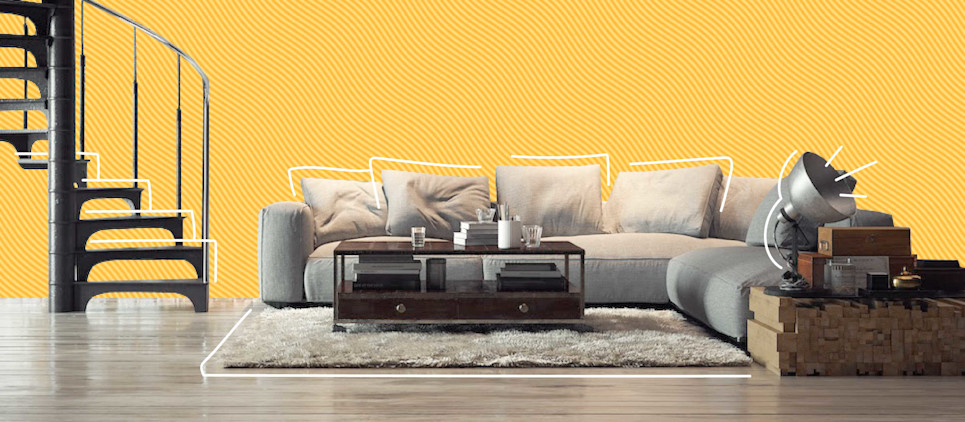What is a loft apartment? Everything to know about living in one
With high ceilings, large windows, and industrial bones, loft apartments are known for having wide open floor plans and tons of character. Loft apartments are an attractive home style for creatives who want to live and work in the same space, as well as those looking for a home with character and history.
But loft living isn’t always as romantic as it sounds—it’s expensive, and comes with trade-offs. Read on to learn what a loft really is, as well as the pros and cons of living in one.

Table of contents
What is a loft apartment?“Hard lofts” and “soft lofts”What is a loft space?What is the difference between a loft apartment and a studio apartment?What are the pros and cons of living in a loft apartment?What is a loft apartment?
A loft apartment is a dwelling that offers one large, open space without internal walls. Aside from the bathroom, which is always separate, there are no distinct rooms. Loft apartments are quite large, typically exceeding 1,000 square feet in even the densest of cities.
Loft apartments emerged in 1960s New York City, when swaths of domestic factories shuttered, leaving industrial buildings vacant. These buildings were converted to inexpensive residences for artists, who could live and work in the raw space. The units are characterized by details like floor-to-ceiling windows, high ceilings, exposed pipes, brick walls, and concrete floors (complete with scuffs and scratches).
“Hard lofts” and “soft lofts”
Over time, lofts have been updated and upgraded to appeal to a wealthier demographic. Today, they are so popular that some newly constructed condo or apartment buildings are made loft-style—that is, in a style that mimics historic lofts. These buildings are called “soft lofts.” True lofts (that are in converted commercial or industrial buildings) are called “hard lofts.”
“Hard lofts” are often found in urban neighborhoods that were once active industrial areas, like SoHo in Manhattan or Downtown Los Angeles. Both hard and soft lofts can be relatively expensive due to their large size and the utility costs that accompany heating, cooling, and illuminating big, open spaces.

What is a loft space?
Whereas a loft apartment is the type of living space described above, a loft space is an architectural feature within a house. It’s a partially open, mezzanine-like level or room that overlooks the main floor below it. A staircase connects the loft space, which can be used as a bedroom or a lounge, to the main floor. The two terms “loft apartment” and “loft space” are sometimes conflated on real estate listings, which will advertise an apartment with a loft area as a loft apartment.
What is the difference between a loft apartment and a studio apartment?
While loft apartments and studio apartments both have an open floor plan with no internal walls separating the space into rooms, loft apartments are defined by their building’s history or, in the case of soft lofts, their architectural style. Lofts are also much larger than studio apartments. Loft apartments have a warehouse-like scale. Studio apartments are characteristically small, usually between 400 and 600 square feet.
What are the pros and cons of living in a loft apartment?
It’s easy to romanticize living in a loft, especially for those of us who connect to their history and character. But like all housing types, loft living comes with trade offs.
Advantages
Lots of space. Loft apartments are spacious and vast, with high ceilings and ample square footage. Whether you prefer minimal design or elaborate decor, you can fill the space as you please. You have plenty of room to move around and create a studio or work area.
Live/work set up. Some lofts are zoned for residential and commercial use—meaning you can legally conduct business from these spaces. This might be a relevant advantage for you if you want to run a small business out of your home.
Natural light. Floor-to-ceiling windows let in the bright light from outdoors. During the daytime, you may not need to turn on any artificial lights, which could help lower the utility bill. Plus, natural light is a proven mood booster.
Location. Most “hard lofts” are located in desirable neighborhoods. This is because many industrial areas have been updated with hip restaurants, trendy nightlife, and startup offices.
Disadvantages
Price. Between rent and utilities, living in a loft apartment can be quite expensive. “Hard lofts” might be even pricier to account for beautiful, historical details.
Limited privacy; not ideal for sharing. Lofts are not only expensive, but they’re not well-suited to sharing with roommates to reduce the cost. The open floor plan doesn’t provide much privacy between spaces. You can certainly use bookcases and divider screens to create separate areas, but there are no walls or doors for complete solitude or quiet space.
No storage. “Hard lofts” were not originally intended to be residences, so they’re often without closets and other storage spaces that a normal home would have.
If loft-life is outside of your budget, consider coliving—that is, living with roommates. Bungalow offers private rooms within shared homes in the best neighborhoods for less than solo living options like lofts. Find a Bungalow near you.
Ready to find your next home?
Move-in ready homes and a built-in community so you can feel at home, together — wherever you are.
Suggested articles



